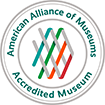


About The Artist
Keith Allen Haring (1958-1990) was born on May 4, 1958, and grew up in a middle-class family of six in the tiny borough of Kutztown, Pennsylvania. His father, an amateur cartoonist, taught Keith to draw his own characters—inspired by Disney and Dr. Seuss—as young as four-years-old. A boy who “never stopped drawing,” Haring enrolled in a commercial arts school in 1976, only to realize the graphic arts bore little interest for him. Two years later, he moved to New York City to study painting at the School of Visual Arts. There he befriended Kenny Scharf and Jean-Michel Basquiat. Together, the three artists became immersed in the underground art scene, their large-scale paintings taking inspiration from the graffiti, music, dance, and counterculture that surrounded them downtown.
In the summer of 1980, Haring left SVA and began making street art. His satirical posters and enigmatic subway drawings garnered him rapid notoriety amongst the public, the police, and, most notably, the art establishment. By 1982, Haring exhibited his artwork—now colorfully painted on vast swaths of tarpaulin or oaktag card stock—in voguish galleries, amassing buyers and critical acclaim. Haring took advantage of his new-found influence and spent much of the mid-1980s making public art, including commemorative murals, charitable commissions, and humanitarian poster campaigns. He was a firm believer in “art for all” and developed celebrity collaborations (Madonna, Grace Jones), advertising campaigns (Adidas, Absolut), and even his storefront (the Pop Shop) to share his work with people from all walks of life.
Tragically, Haring was diagnosed with AIDs at the peak of his career in 1988. He died of complications from the disease on February 16, 1990, at the age of 31.
About this Exhibition

Introduction
Keith Haring (1958-1990) was arguably the most accomplished and prominent American artist of the 1980s. Throughout his brief ten-year career, Haring rewrote the rulebook for contemporary art, integrating the seemingly discrete arenas of New York City’s gritty downtown counterculture and uptown art aristocracy. Despite working in a variety of mediums—including paintings, prints, posters, drawings, sculptures and street art—Haring’s style was instantly recognizable. Bold lines, pictographic symbols, and vibrant colors abounded in every piece he made. A friend of Andy Warhol, Haring represented the apotheosis of Pop Art, unabashedly exploring the marketing potential of his “brand” through commercial partnerships, mass market products, and even his own storefront, titled the Pop Shop.
Yet Haring’s work transcended commodification by reflecting the artist’s fervent activism and democratic beliefs.An advocate for nuclear de-escalation, civil rights, child welfare, and AIDS awareness, Haring spent his career making posters, public art, and charitable commissions in support of these vital causes. Their struggles permeated his murals and massive wall paintings, leading one prominent critic to liken his work to “contemporary history paintings” chronicling the plights of late twentieth-century society. Success offered Haring an “entry pass to the world,” and he used it to reconnect with the public, collaborating with neighborhood kids while championing the idea that art should belong to everyone.
Haring died from AIDS-related complications at only thirty-one-years-old, a fact that tends to enshroud most conversations about the artist’s meteoric career. Keith Haring: Radiant Vision, however, focuses on the indelible impact of Haring’s exuberant life, which, through the incomparable body of work in these galleries, continues to inspire today.


